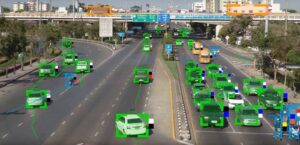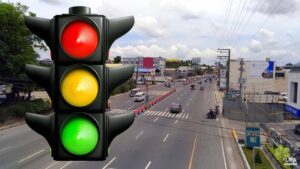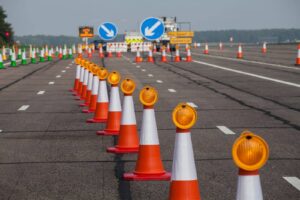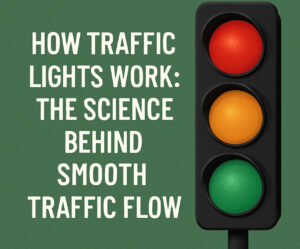In today’s fast-evolving traffic management landscape, the role of smart systems is more important than ever. From enhancing 10 traffic signals at key intersections to supporting hand signals traffic control in school zones and integrating new traffic signals with cutting-edge Doppler radar technology, innovation is reshaping how we manage roads. These intelligent systems aren’t just about automation—they’re about saving lives, improving traffic flow, and reducing human error.
Doppler radar technology is at the center of these advancements. It’s being embedded directly into new traffic signals, alerting speeding vehicles, adapting signal timing based on congestion, and even communicating with autonomous cars. Whether you’re managing a city grid or a suburban crosswalk, understanding how Doppler radar is revolutionizing traffic signs is essential. Know more..
What is Doppler Radar and How Does It Work with Traffic Systems?
Doppler radar measures the speed of an object by bouncing a radio wave off it and analyzing the frequency shift. This principle, known as the Doppler Effect, allows traffic systems to detect vehicles’ speed, direction, and distance in real time.
When paired with new traffic signals, this tech can:
- Adjust signal timing based on real-time traffic flow
- Alert drivers when they are speeding in sensitive zones
- Provide traffic count data for planning and enforcement
- Support 10 traffic signals in high-density areas by syncing them dynamically
More advanced systems even distinguish between cars, trucks, bikes, and pedestrians—making them far more versatile than traditional sensors.
Why Doppler Radar Beats Traditional Traffic Detection
Before radar integration, most traffic signs and signals relied on loop detectors (wires embedded in the pavement), infrared sensors, or camera-based systems. While still in use, these older systems have several limitations:
- Weather Sensitivity: Cameras fail in fog, rain, or snow.
- Maintenance Costs: Loop detectors require digging into the pavement for installation and repair.
- Fixed Detection Points: They can’t monitor beyond a specific lane or zone.
Doppler radar solves these issues with its:
- All-weather capability
- Non-intrusive mounting (above-ground installation)
- Wider field of view
- Lower long-term maintenance cost
These advantages are pushing cities to replace or upgrade 10 traffic signals at a time with radar-assisted systems—especially in accident-prone intersections or high-speed corridors.
How Doppler Radar Enhances Traffic Sign Performance
1. Dynamic Speed Feedback Signs
You’ve seen those electronic signs that flash your speed as you drive by. Many now use Doppler radar. These aren’t just reminders—they’re proven tools for reducing speed-related crashes. Paired with new traffic signals, they can trigger red lights when drivers exceed safe limits.
2. School Zones and Hand-Controlled Areas
In areas where hand signals traffic control still plays a role—like school crossings or construction zones—Doppler radar can act as a digital “backup.” It alerts both the controller and incoming drivers when vehicles are speeding. In the future, these systems may automatically override hand signals with automated signage during emergencies or human error.
3. Emergency Vehicle Prioritization
Doppler radar can identify fast-approaching emergency vehicles and change 10 traffic signals in advance to give them green light corridors. This improves response times and reduces the chance of intersection collisions.
Real-World Applications of Radar-Enhanced Traffic Signs
Smart Intersections
Cities like Los Angeles, Chicago, and Toronto have adopted radar-assisted systems in dense corridors where 10 traffic signals might interact at once. These systems use Doppler radar to analyze vehicle clusters and reduce bottlenecks by adjusting green-light lengths in real-time.
Rural Roads and Speed Zones
Radar-integrated signs are especially valuable on rural highways where speeding is a major cause of accidents. When a vehicle exceeds the limit, a new traffic signal (e.g., flashing LED sign) can instantly warn the driver—or even trigger a camera-based enforcement system.
Bike and Pedestrian Detection
Unlike loop detectors that can’t “see” bicycles or pedestrians, Doppler radar can track non-motorized movement. This supports smarter crosswalk signals, especially in school zones where hand signals traffic enforcement might be limited.
Radar Meets AI: The Future of Traffic Control
What happens when you combine Doppler radar with artificial intelligence? Smarter decision-making.
Radar collects data—AI analyzes it. These systems can:
- Predict traffic surges based on patterns
- Adjust 10 traffic signals proactively
- Detect erratic driver behavior (weaving, sudden stops)
- Activate new traffic signals only when needed (reducing unnecessary red lights)
In the future, these combined systems will communicate directly with vehicles, enhancing road safety and traffic fluidity beyond what human-controlled systems can offer.
Challenges and Considerations
While Doppler radar has many benefits, it’s not without challenges:
- Calibration: Requires expert setup to avoid false readings
- Signal Interference: In urban areas with lots of radio signals, interference can be an issue
- Privacy Concerns: Some worry that vehicle tracking may invade driver privacy
However, modern systems have built-in encryption and data anonymization to address these concerns. With proper design, new traffic signals using radar can balance efficiency and ethics.
Environmental and Economic Benefits
Upgrading 10 traffic signals with Doppler radar isn’t just about safety—it’s also about sustainability:
- Lower fuel usage: Adaptive lights reduce idling time
- Fewer emissions: Less stop-and-go traffic leads to cleaner air
- Cost-effective maintenance: No need to dig up roads to replace sensors
Cities can even secure federal or green infrastructure funding by showcasing the environmental advantages of radar-enhanced systems.
How to Implement Doppler Radar in Your Traffic System
Thinking of upgrading your setup? Here’s a simple roadmap:
- Conduct a Site Audit – Evaluate intersections where hand signals traffic or older sensors are underperforming.
- Choose the Right Radar Units – Consider range, sensitivity, and field of view.
- Integrate with Existing Infrastructure – Most modern radar units are compatible with common traffic controllers.
- Train Personnel – Traffic engineers and operators need to understand system capabilities and limitations.
- Monitor & Adjust – Use radar data analytics to optimize signal timing and track performance over time.
Final Thoughts: A Smarter, Safer Road Ahead
From school zones to smart cities, Doppler radar technology is revolutionizing the way we control traffic. Whether it’s improving hand signals traffic safety, synchronizing 10 traffic signals, or enabling new traffic signals to react intelligently, this tech is changing everything.
As more municipalities adopt radar-based traffic control, the roads of tomorrow are shaping up to be not just more efficient—but far safer. It’s not just about lights turning red or green anymore. It’s about systems that think, adapt, and respond.
And that’s the kind of progress every driver, pedestrian, and city planner can get behind.





